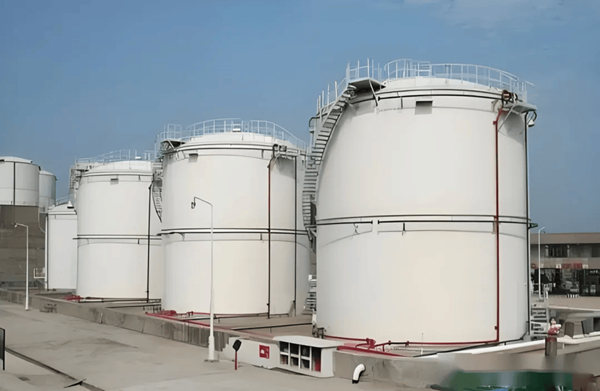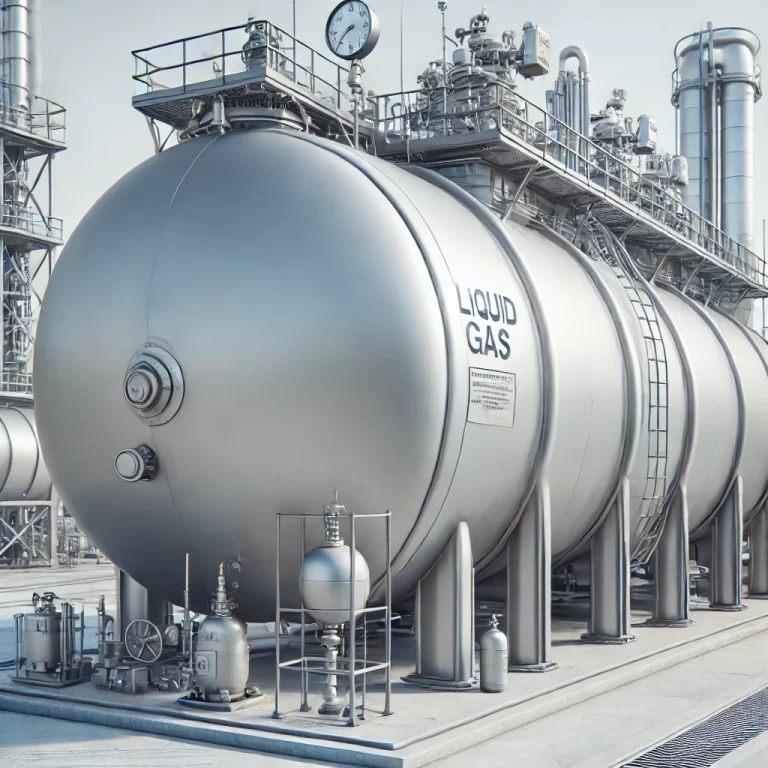Tank farms, or storage tank areas, are critical facilities where large volumes of chemicals, petroleum products, or other hazardous substances are stored. Due to the high risk of accidents, fires, or spills, stringent safety measures must be in place to protect personnel, equipment, and the environment. Here is a comprehensive safety guideline for the operation and management of tank farms:
1. Pre-Entry Preparations
- Personal Protective Equipment (PPE): Workers must wear appropriate PPE, including hard hats, safety goggles, gloves, flame-resistant clothing, anti-static clothing, and safety boots. These protect against physical and chemical hazards.
- Environmental Checks: Before entering the tank farm, operators should ensure there are no visible leaks, hazardous vapors, or unusual odors. Any abnormalities should be reported immediately.
- Gas Detection Equipment: Carry gas detection equipment, especially if there are flammable or toxic gases present. This helps to identify any leaks or unsafe gas concentrations.
- Emergency Equipment: Workers should have easy access to fire extinguishers, spill control kits, and emergency alarms in case of a sudden incident.

2. Operating Protocols
- Follow Standard Operating Procedures (SOPs): Always adhere to the specified SOPs for tasks like filling, emptying, and transferring materials. This includes managing flow rates to avoid overflow or overpressure situations.
- Control Temperature and Pressure: Tank farms are designed with specific temperature and pressure limits. Exceeding these can lead to structural failure or chemical reactions, so constant monitoring is essential.
- Regular Inspections: Conduct frequent inspections of tanks, pipelines, valves, and other equipment. Look for signs of corrosion, wear, or leaks. Detecting these early can prevent larger incidents.
- Use Grounding and Bonding: Bond and ground all equipment properly to avoid static electricity buildup, which can ignite flammable materials.
3. Fire and Explosion Prevention
- Control Ignition Sources: Open flames, smoking, and spark-generating tools are strictly prohibited in tank farm areas. Only non-sparking tools should be used, and equipment should be designed to be explosion-proof.
- Maintain Fire Breaks and Isolation Zones: Keep the tank farm separated from other facilities or operations by using firewalls and isolation zones. This containment area can prevent a fire from spreading.
- Ventilation Systems: Ensure adequate ventilation to disperse flammable gases and vapors. Proper ventilation can prevent the buildup of potentially explosive atmospheres within and around tanks.
- Routine Maintenance of Fire and Explosion Equipment: Regularly inspect and maintain fire suppression systems, fire hydrants, and explosion-proof lighting and electrical equipment.

4. Leak Detection and Response
- Install Leak Detection Systems: Utilize modern leak detection sensors, such as hydrocarbon detectors, which can quickly identify a leak and trigger an alarm.
- Contain and Control Leaks: In the event of a leak, immediately seal off the area and work to stop the leak source. Use containment materials, such as absorbents or spill barriers, to limit the spread.
- Stock Emergency Supplies: Keep a ready supply of emergency response equipment, including spill kits, absorbent materials, respirators, and portable fire extinguishers.
- Evacuation Protocols: Be prepared to evacuate non-essential personnel from the area in case of a severe leak that poses an immediate risk to health and safety.
5. Emergency Preparedness
- Emergency Drills and Training: Conduct regular emergency drills, including evacuation, spill response, and fire response exercises. Every employee should understand their role in an emergency and know the fastest route to designated muster points.
- Accessible Emergency Plans: Have written emergency response plans readily available in multiple locations throughout the tank farm. These should include detailed maps, muster points, and roles of emergency response teams.
- Communication Protocols: Ensure that communications equipment, such as radios or mobile phones, is readily available and functional to coordinate effectively during an emergency.
- Coordination with Local Authorities: Establish relationships with local fire departments, hazardous materials response teams, and environmental agencies. Provide them with site maps and information on stored materials to facilitate quick and effective response.

6. Additional Precautions and Best Practices
- Clearly Label Hazardous Materials: All tanks and piping should be clearly labeled with their contents, hazards, and safety precautions. This helps emergency responders and workers identify risks quickly.
- Good Housekeeping: Keep the tank farm free from debris, waste, and unnecessary materials. Avoid oil and chemical spills, and immediately clean up any minor spills to reduce slip hazards and minimize contamination.
- Strict Access Control: Limit entry to the tank farm to authorized personnel only. Use access cards, surveillance, and physical barriers to prevent unauthorized access.
- Compliance with Regulatory Standards: Follow national and local regulatory guidelines related to hazardous material storage, fire safety, and environmental protection.

Conclusion
Maintaining a safe tank farm requires diligent preparation, adherence to strict operational protocols, effective emergency planning, and ongoing staff training. With the right safety procedures, equipment, and emergency measures, tank farm operators can significantly reduce the risk of accidents and ensure the safety of both personnel and the environment.
